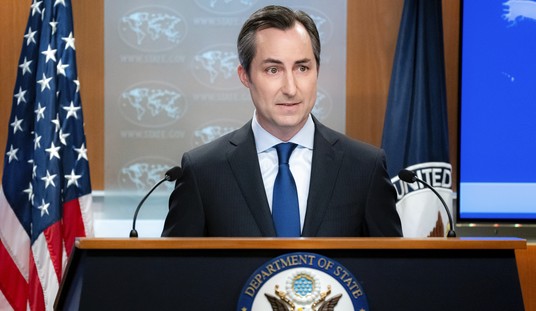WASHINGTON - Federal Reserve Chairman Janet Yellen briefed the country Wednesday on the Fed's plans for the economy's problem-plagued recovery, sending Wall Street into a swoon.
It was her first news conference as the new head of the nation's central bank, and though she was cautious in her remarks, she suggested that economic data has improved more than many people, and other economists, think.
But it was the Fed's plans to start raising interest rates earlier than expected that came as an ice cold shower for the still- sluggish economy and for the stock market.
Yellen's remarks, following a report on the Fed's two-day meeting, sent the Dow Jones industrial average down by 114 points.
The Fed, she said, will continue withdrawing from its bond buying stimulus, which has kept the anemic Obama economy on its life support system -- though with little to show for it in terms of jobs and economic growth.
Recommended
And, choosing her words carefully, she said the Fed would begin raising its interest rates, though perhaps not until 2015, depending on the economy's health.
The Fed has kept its interest rates at zero since 2008, but Yellen said the economy has improved enough for the Fed to begin preparations to slowly raise its rates, which affect a broad swath of business and consumer loans for home mortgages and auto purchases.
The timing of the first hike could be "something on the order of around six months" after the Fed stops pumping money into the economy in its bond buying program near the end of this year.
In an effort to reassure nervous investors, she said the higher rates would be kept beneath historical levels over the long run -- but that was cold comfort in a high volatility economy and a stubbornly tough business climate.
"Monetary policy will be geared to evolving conditions in the economy," she said. "And the public does need to understand that as those views evolve, the committee's views on policy will likely evolve with them."
Still, the expectation of rising interest rates that will raise business costs was a grim prospect for employers who are still struggling in an uncertain economic environment.
The idea that interest rates would rise in the 2015-16 presidential election cycle was not a happy omen for the Democrats, either, who are already battling political and economic headwinds in this year's midterm elections.
A survey of Fed officials showed that interest rates may rise to 1 percent by the end of next year, and to 2 percent or higher in 2016.
Yellen acknowledged the economy still faced a number of challenges on job creation, long term unemployment, a shrinking labor force, but she insisted that there have been improvements in the economic numbers. Really?
Fed economists have slightly lowered their forecasts for economic growth to a sub-par 2.8 percent to 3 percent this year -- forecasts that have often been far too optimistic in previous years.
They were also predicting that the jobless rate will fall much faster than currently forecast, dropping to 6.1 to 6.3 percent this year, and down into the 5 percent range in 2015. That seems unlikely in the absence of any tax cut incentives.
Someone asked Yellen at her press conference why the recovery has taken so long, but she dodged the question with the well-worn White House excuse that the recession was much deeper than expected.
Actually, in many ways, President Reagan encountered a much deeper recession in 1981-82, with unemployment reaching nearly 11 percent. But the economy came roaring back in two years, the average length for most recessions, as a result of his across-the-board tax cuts.
Six years into this recession, economic growth remains weak, slipping to 1.9 percent in 2013 -- amid signs of yet another slow start this year, too.
Job growth has been terrible, nowhere near where we should be at this juncture if the right policies had been put in place. In September, 1983, Reagan's economy created over one million jobs in a single month.
"The [Obama] economy created 113,000 jobs in January, up from 75,000 in December," says economist Peter Morici of the University of Maryland's School of Business.
"Colder than normal weather was a factor but that simply does not explain two consecutive months of poor performance. These sad results are consistent with a broadly underperforming economy," he says.
Job growth crept up a little in February, coming in at 175,000 jobs, but that was nowhere near the monthly jobs needed to put American back to work.
The New York Times said the 175,000 figure "was still well short of the pace needed to return the economy to full employment anytime soon or to quickly reduce the ranks of the long-term unemployed."
There was little or nothing in Yellen's analysis before the Washington press corps Wednesday that in any way acknowledged this. And the Fed provided no evidence to support its rosy forecasts of a plummeting jobless rate.
That is, unless the Fed is hoping that many more people will be dropping out of the labor force because they can't find work and quit looking, and thus are no longer defined as unemployed.
In January, the White House bragged about the jobless rate falling to 6.6 percent, but that was "largely because 91,000 additional working-age adults chose not to seek employment," Morici says. "[O]ne out of every six adult men is jobless and likely to stay that way," he added.
If you factor in the adults on the sidelines who say they would be seeking work if the job market improved, and part-timers who need full time employment, the jobless rate would be 12.7 percent, he says.
The Gallup Poll puts the real unemployment rate at 7.2 percent and the underemployed at 16.5 percent, with 41 percent of the respondents saying they're "struggling" and 4 percent saying they're "suffering."
These Americans were nowhere to be seen in the Fed's exaggerated forecasts this week.


